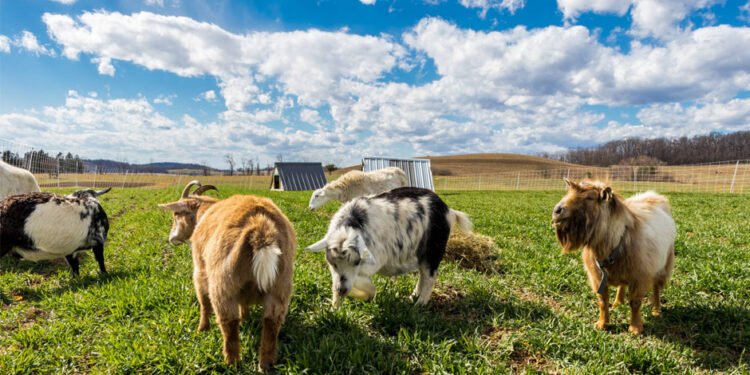In the ever-evolving world of farming, adaptability is key. Flexible livestock management practices can make a significant difference in the health and productivity of your animals. Not only does it contribute to the sustainability of your farm, but it also helps in mitigating risks associated with environmental changes and market demands. This article delves into various strategies to enhance flexibility in livestock management, ensuring your farm thrives under varying conditions. By adopting flexible practices, you can better manage resources and respond to unexpected challenges. Flexibility also means you can take advantage of new opportunities as they arise. Are you ready to transform your approach to livestock management? Let’s explore the steps together.
Understanding Livestock Needs
Each type of livestock has unique needs, and understanding these is the first step toward flexible management. Regular health checks and monitoring are crucial. These practices allow you to quickly identify and address health issues, ensuring your animals remain in optimal condition. By staying attuned to the specific needs of your livestock, you can make informed decisions that support their well-being and productivity. Observing behavior and physical conditions daily can reveal subtle signs of stress or illness. Implementing a robust record-keeping system helps track individual animal health and history. How often do you review and update your livestock management protocols? Keeping them current with the latest research is essential.
Optimizing Grazing Practices
Rotational grazing is a powerful tool for enhancing flexibility. This method involves moving livestock between pastures to allow vegetation in previously grazed areas to recover. Implementing a flexible grazing schedule means you can adjust grazing intensity based on pasture conditions and growth rates. Seasonal adjustments are also essential. For instance, during dry seasons, reducing herd density in certain areas can prevent overgrazing and soil degradation. It’s also beneficial to diversify the types of forage available to your livestock. Including a mix of grasses and legumes can improve soil health and provide better nutrition. How do you currently manage grazing on your farm? Regularly assessing and adjusting your approach can lead to significant benefits.
Utilizing Mobile Infrastructure
Mobile infrastructure plays a critical role in flexible livestock management. Portable livestock equipment, such as mobile shelters and feeders, can be easily relocated to support different management strategies. One effective example is the use of a portable chicken coop. By moving the coop regularly, you can provide fresh grazing areas for your chickens, reduce disease risk, and promote healthier pastures. This flexibility also allows you to quickly respond to changing environmental conditions, ensuring your flock remains healthy and productive. Mobile infrastructure isn’t limited to chicken coops; consider portable fencing and water systems as well. How could incorporating more mobile solutions improve your operations? The ability to move infrastructure as needed can greatly enhance your farm’s resilience.
Technology and Livestock Management
Technology has become an invaluable asset in modern livestock management. Real-time monitoring systems allow you to track the health and location of your animals, providing crucial data for making timely decisions. Various apps and software can help you manage feeding schedules, health records, and breeding programs. Automated feeding systems are another excellent example. These systems can be programmed to adjust feed rations based on the nutritional needs of your livestock, providing flexibility in your feeding practices. This not only ensures your animals receive the right nutrients but also reduces waste and feeding costs. Embracing technology can lead to significant labor savings and efficiency gains. Are you leveraging technology to its fullest potential on your farm? Continuous innovation can provide a competitive edge.
Managing Environmental Challenges
Environmental challenges such as extreme weather conditions and natural disasters can pose significant risks to livestock. Developing strategies to adapt to these challenges is essential for maintaining flexibility. Building shelters and windbreaks that can be easily moved or adjusted can provide protection against harsh weather conditions. During droughts, implementing water-saving measures and providing alternative water sources can help maintain livestock health. In flood-prone areas, having a plan to relocate animals to higher ground quickly is crucial. Flexibility in your infrastructure and management practices can significantly reduce the impact of these environmental challenges on your farm. How prepared are you for sudden environmental changes? Regularly updating your contingency plans can help mitigate risks.
Training and Education
Continuous learning is vital for effective livestock management. Staying updated on the latest practices and technologies can help you adapt to changing conditions and improve your management strategies. Workshops, courses, and online resources provide valuable opportunities for learning and skill development. Encouraging your team to engage in ongoing education can also foster a culture of adaptability on your farm. By investing in training, you ensure that everyone involved in livestock management is equipped with the knowledge and skills needed to respond to challenges effectively. Knowledge sharing among staff can also lead to innovative solutions and improvements. What educational resources have you explored recently? Staying curious and informed is key to staying ahead.
Conclusion
Enhancing flexibility in livestock management is not just about implementing new practices; it’s about adopting a mindset of adaptability and continuous improvement. By understanding the specific needs of your livestock, optimizing grazing practices, utilizing mobile infrastructure, embracing technology, and staying prepared for environmental challenges, you can ensure the long-term success and sustainability of your farm. Incorporating these strategies will help you create a resilient and thriving farming operation. As you implement these practices, remember that flexibility is not a one-time effort but an ongoing process. Stay committed to learning and adapting, and your farm will be well-equipped to handle whatever challenges come your way. For more detailed insights and up-to-date information, resources like University of California’s Agriculture and Natural Resources offer extensive research and guidelines on sustainable livestock management. Every step towards greater flexibility enhances your farm’s potential for success.













